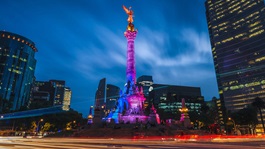In emerging Asia, where much of the population growth and urbanization is anticipated, there is considerable interest in smart city and sustainability initiatives, although these are not always integrated into urban infrastructure plans.
Bangkok and Jakarta both suffer from frequent flooding as well as congestion, pollution, and transport issues. In these cities, developing infrastructure that mitigates some of the worst impacts of climate change is a priority. In 2011, flooding in Bangkok caused US$45 billion worth of damage, of which only US$10 billion was insured4. Bangkok’s City Resilience Strategy5 includes multiple measures to improve flood resilience, including an integrated and robust urban flood defense system, structural modifications to existing drainage systems, and developing new water storage capacity.
As a separate initiative, the Thai government is working to integrate digital technology, energy and transport to improve quality of life in the cities. Seven cities are currently taking part in a pilot project to develop smart city initiatives (including the development of high-speed internet infrastructure and free Wi-Fi in Phuket).
As well as discrete ‘smart city’ initiatives, and specific climate-resilience projects, there are a number of large-scale infrastructure projects planned by the Government which, once implemented, will make a major contribution to urban development. Several urban mass transit rail projects are planned in Bangkok, along with light rail projects in Phuket, Chiang Mai and Kon Khean. A high speed rail project connecting Bangkok with Rayong is planned. Most of these rail projects will be developed by means of Public-Private Partnership (PPP).
As in Thailand, the Government of Indonesia has smart city aspirations: in 2017 it launched the 100 Smart City project. To date, the projects have been largely focused around telecommunications infrastructure that deliver improved public services such as waste management and policing. These projects are relatively small; developing basic infrastructure such as mass rapid transport and water management systems remain a higher priority.








